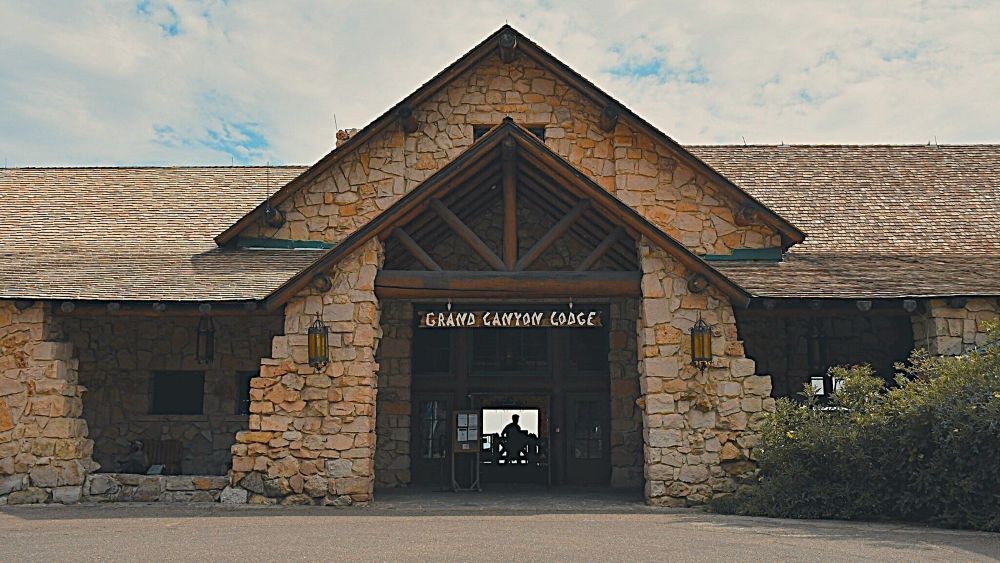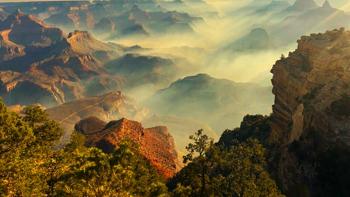Grand Canyon’s Historic Lodge Reduced to Ashes as Wildfires Force North Rim Closure for the Season
A fast-moving wildfire has ravaged the North Rim of the Grand Canyon, consuming the iconic Grand Canyon Lodge and dozens of nearby structures, prompting officials to shut down the area for the rest of the season. The destruction, confirmed Sunday morning by park authorities, has left a deep emotional impact on the park’s community and long-time visitors alike.
The Grand Canyon Lodge, a rustic landmark known for its ponderosa beams, sloped roof, and limestone façade, was the only lodging facility within the North Rim. Its loss marks a significant blow to both history and tourism. “It just feels like you’re a pioneer when you walk through there,” said longtime visitor Tim Allen, who described the lodge as a portal to a time gone by.
Park Superintendent Ed Keable announced during a meeting with staff and residents on Sunday that, in addition to the lodge, the fire had destroyed critical infrastructure including the visitor center, gas station, wastewater treatment plant, administrative buildings, and employee housing. Between 50 and 80 structures have been lost, including many historic cabins.
Two Wildfires Threaten Grand Canyon’s North Rim
The devastation was caused by the Dragon Bravo Fire, one of two wildfires currently burning in or near the North Rim. The second, known as the White Sage Fire, has also significantly expanded in recent days.
The Dragon Bravo Fire was ignited by lightning on July 4 and was initially being managed with a "confine and contain" strategy, aimed at clearing vegetation and limiting the fire’s spread. However, within a week, escalating weather conditions — high temperatures, low humidity, and gusty winds — caused the fire to rapidly intensify, growing to 7.8 square miles, prompting fire crews to switch to full suppression tactics.
The White Sage Fire, meanwhile, doubled in size on Sunday, ballooning from approximately 20,000 acres to 40,000 acres, as reported on a federal wildfire monitoring site. Fire officials stated that progress was being made, with containment lines holding in some areas, particularly around Jacob Lake, but the blaze continued to advance rapidly in other directions, driven by dry grasses and standing dead trees.
No Injuries, But Environmental Hazards Remain
Thankfully, no injuries have been reported in connection with either fire. Firefighters and hikers were safely evacuated from the North Rim and inner canyon over the weekend. However, concerns remain regarding potential chlorine gas exposure following the destruction of the wastewater treatment plant. The Centers for Disease Control and Prevention (CDC) warns that chlorine gas, which is heavier than air, can cause blurred vision, irritation, and respiratory issues when inhaled in large quantities.
In response to the unfolding situation, visitors rafting along the Colorado River have been instructed to bypass Phantom Ranch, a popular stop featuring dormitories and cabins, located deep within the canyon.
A Historic Loss
Originally built in 1928, the Grand Canyon Lodge was destroyed by a kitchen fire in 1932 and rebuilt five years later using much of the original stonework. The lodge wasn’t just a place to stay — it was a beloved piece of history. At its heart stood the famous 600-pound bronze statue of Brighty the Burro, a tribute to a real-life donkey that once roamed the canyon.
Tim Allen, a Flagstaff, Arizona resident who visited the North Rim annually, mourned the loss deeply. “The North Rim felt more personal because of its remoteness and fewer crowds,” he said. “It’s heartbreaking.”
The lodge operator, Aramark, confirmed that all guests and staff had been safely evacuated. “We are devastated by the loss,” said a company representative.
The president of the Grand Canyon Historical Society, Thomas Sulpizio, expressed concern about whether historic archives kept at the lodge survived the blaze.
Fire Response and Political Pressure
Arizona Governor Katie Hobbs has urged federal authorities to investigate the National Park Service’s response to the wildfire. In a post on social media, she called for a detailed report on the sequence of decisions that led to the loss, stating that "Arizonans deserve answers."
Meanwhile, crews continue working to contain the White Sage Fire. By Sunday afternoon, it had consumed 63 square miles, with fire lines holding in some areas while others remained under threat, including the Vermilion Cliffs.
Colorado Wildfire Forces National Park Closure
Elsewhere, in western Colorado, a lightning-sparked wildfire forced the closure of Black Canyon of the Gunnison National Park, located about 260 miles southwest of Denver. The fire, which ignited on Thursday, has burned over 5.6 square miles and prompted the evacuation of nearby homes.
In response, Colorado Governor Jared Polis issued a disaster declaration on Sunday due to the wildfire’s rapid spread and threat to life and property. His office confirmed that the fires across western Colorado were all triggered by the same storm system.
A third wildfire near the Colorado-Utah border, close to La Sal, Utah, also ignited on Thursday and has already burned around 14 square miles of land.

